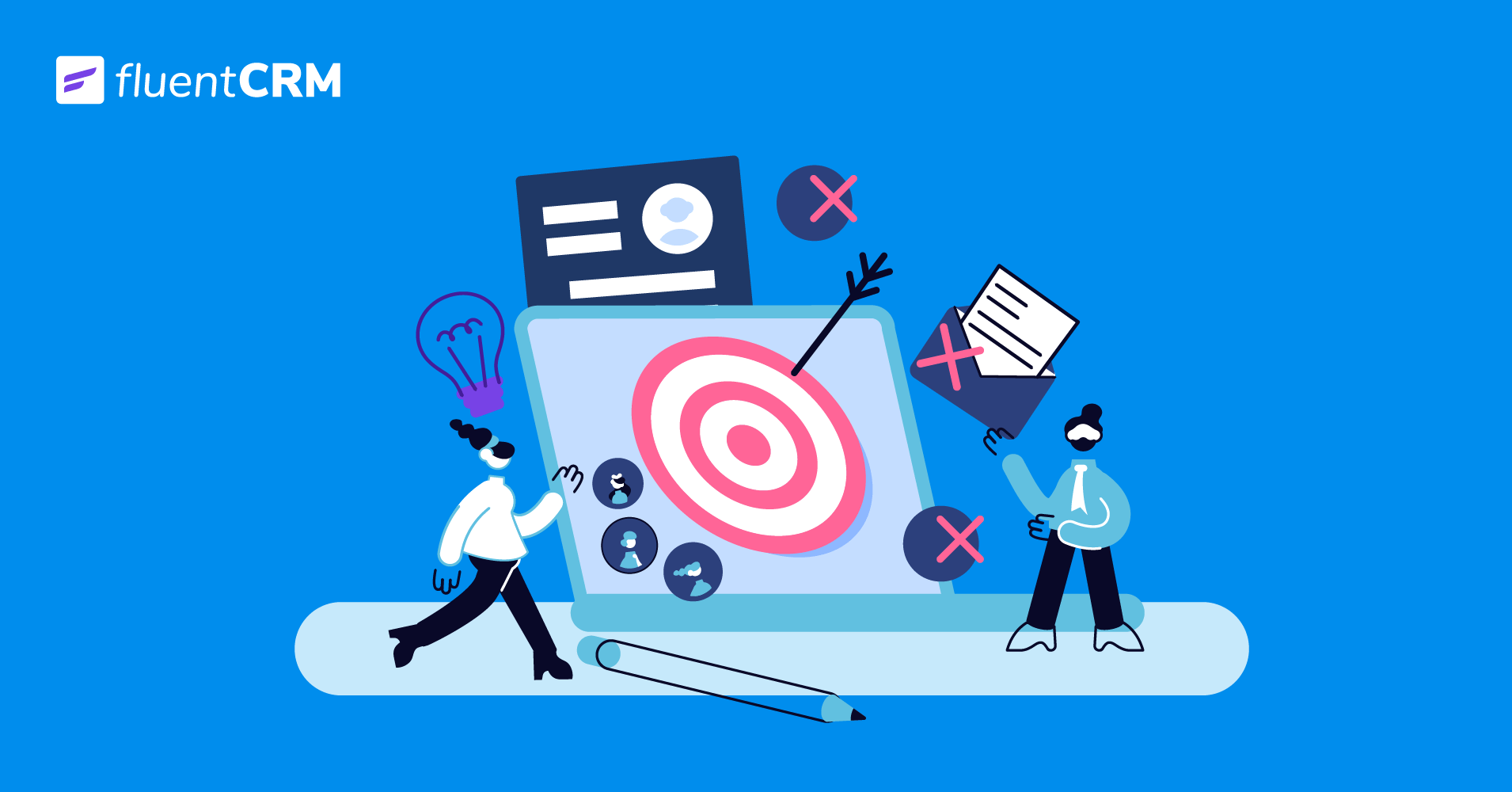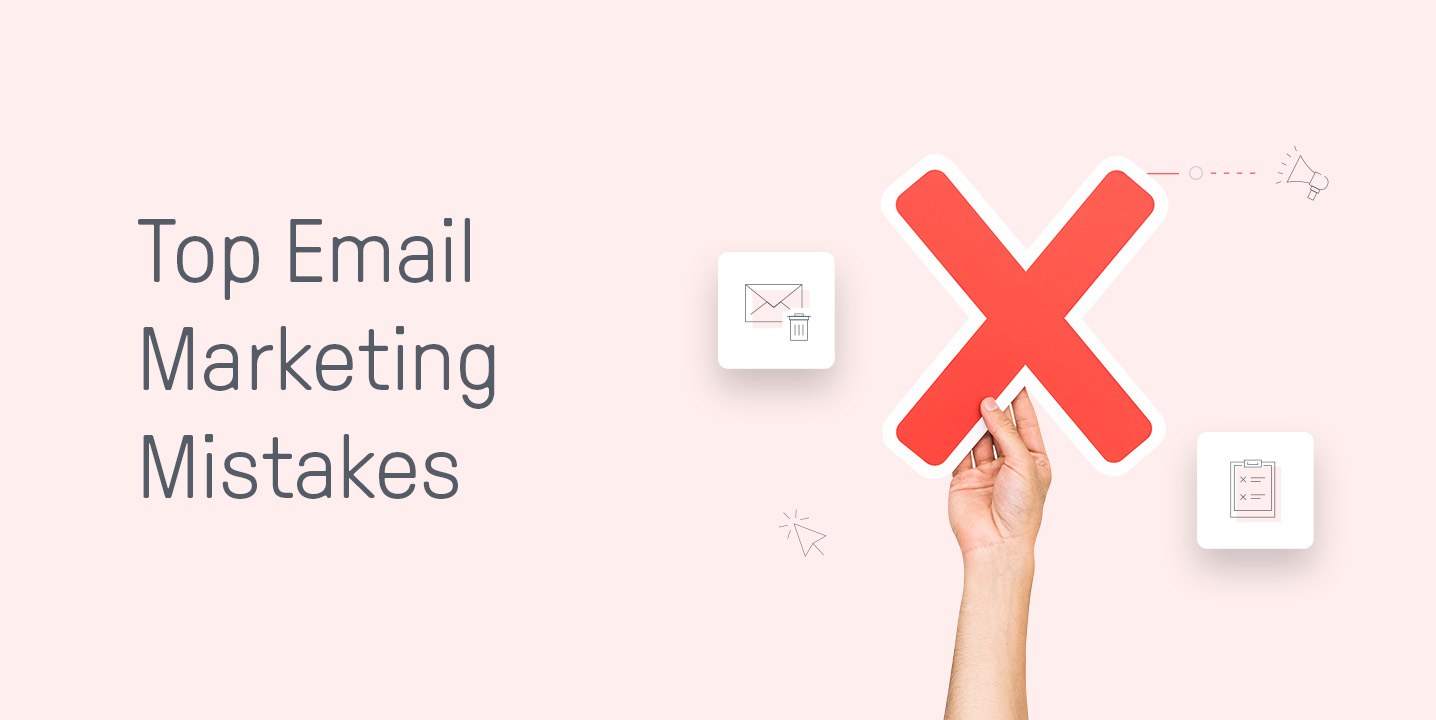
Common email marketing mistakes include ignoring personalization and failing to segment your audience. These errors can lead to lower engagement and higher unsubscribe rates.
Email marketing remains a powerful tool for businesses. Yet, many marketers fall into common traps that hinder their campaigns. Personalization is key; generic emails often get ignored. Segmenting your audience ensures messages are relevant, boosting engagement. Avoiding these mistakes can significantly improve your email marketing success.
Effective strategies include crafting compelling subject lines and providing valuable content. Regularly updating your email list helps maintain accuracy and relevance. Monitoring analytics offers insights into what works and what doesn’t. By paying attention to these details, you can maximize the effectiveness of your email marketing efforts.
Introduction To Email Marketing Pitfalls
Email marketing is a powerful tool for businesses. But, mistakes can hurt your efforts. Understanding common pitfalls helps you avoid them. Let’s dive into the main issues.
The High Stakes Of Email Campaigns
Email campaigns can make or break a business. Mistakes can lead to lost customers. A successful campaign boosts sales and trust. But a bad one harms your reputation.
Common Misconceptions
Many believe more emails mean more sales. This is a big misconception. Quality over quantity is key. Another mistake is ignoring mobile users. Many people check emails on their phones. Ensure your emails are mobile-friendly.
| Misconception | Reality |
|---|---|
| More emails mean more sales | Focus on quality, not quantity |
| Ignoring mobile users | Optimize for mobile devices |
- Don’t send too many emails.
- Always test your emails on mobile devices.
- Personalize your content for better engagement.
- Check your email list for accuracy.
- Segment your audience for targeted messages.
- Track your results to improve future campaigns.
Ignoring Audience Segmentation
Email marketing is a powerful tool. However, ignoring audience segmentation can be disastrous. Many marketers make this mistake. They send the same email to everyone. This can lead to low engagement rates. It can also hurt your brand.
The Importance Of Targeted Content
Targeted content speaks directly to your audience. It addresses their specific needs and interests. This makes them feel valued. They are more likely to engage with your emails.
Studies show that segmented campaigns have higher open rates. They also have better click-through rates. This means more potential sales for your business.
Techniques For Effective Segmentation
Effective segmentation requires understanding your audience. Here are some techniques to help:
- Demographic Data: Use age, gender, and location to create segments.
- Behavioral Data: Analyze past purchases and email interactions.
- Preferences: Ask your audience what they prefer to receive.
Tools like CRM systems can help. They can automate the segmentation process. This saves time and ensures accuracy.
Here is a simple table to guide you:
| Segmentation Type | Example |
|---|---|
| Demographic | Age: 18-24, Gender: Female |
| Behavioral | Purchased in the last month |
| Preferences | Interested in Sports News |
By using these techniques, you can ensure your emails are relevant. This increases the chance of conversions. Your audience will appreciate the personalized content.
Neglecting Mobile Optimization
Many marketers overlook mobile optimization in email marketing. This mistake can cost you many potential customers. Emails that don’t look good on mobile can be deleted quickly. Mobile-friendly emails are crucial in today’s digital age.
Rise Of Mobile Email Consumption
The use of mobile devices for checking emails is rising. Many people now prefer reading emails on their phones. According to research, over 60% of emails are opened on mobile devices. Ignoring mobile users can lead to a significant loss of engagement.
Here is a table showing the rise of mobile email consumption:
| Year | Percentage of Mobile Opens |
|---|---|
| 2015 | 38% |
| 2017 | 53% |
| 2019 | 62% |
| 2021 | 65% |
Designing For Smaller Screens
Designing emails for smaller screens is essential. Use a single-column layout. Keep your text short. Avoid large images that take long to load.
Here are some tips for designing mobile-friendly emails:
- Use a large, readable font.
- Ensure buttons are easy to tap.
- Keep the subject line short.
- Test your email on multiple devices.
Mobile optimization is not optional. It is necessary for successful email marketing. Make sure your emails look good on all devices.
Overlooking Email Timing And Frequency
Email marketing can be powerful. Yet, many marketers fail to see results. One key reason is ignoring email timing and frequency. Sending emails at the wrong time can lead to poor engagement. Sending too often can irritate your audience. The right timing and frequency are crucial for success.
Best Practices For Scheduling
Scheduling emails properly boosts open rates and engagement. Here are some best practices:
- Know Your Audience: Understand your audience’s habits and preferences.
- Test Different Times: Send emails at various times to see what works best.
- Consider Time Zones: Schedule emails to arrive at the right time for different time zones.
- Use Analytics: Analyze past campaigns to identify optimal send times.
- Automate Sending: Use email marketing tools to automate and optimize scheduling.
Balancing Consistency And Overload
Finding the right balance is essential. You want to stay on your audience’s radar. But you don’t want to overwhelm them. Here’s how you can achieve this:
- Set Clear Expectations: Let subscribers know how often they’ll hear from you.
- Track Engagement Metrics: Monitor open rates and unsubscribe rates.
- Segment Your List: Send different frequencies based on user behavior and preferences.
- Avoid Spamming: Quality over quantity. Focus on value in each email.
- Offer Preferences: Allow subscribers to choose email frequency.
Balance is key. Regular emails keep your brand top of mind. Too many emails can push people away. Use data to find the right frequency for your audience.
Failing To Personalize Content
Personalization is key in email marketing. Many marketers forget this. They send generic emails. This leads to lower engagement. Subscribers want relevant content. Failing to personalize can hurt your campaign.
The Power Of Personalization
Personalized emails get more open. They also get more clicks. People like feeling special. They want content that speaks to them. Personalized emails show you care. They build trust and loyalty.
| Benefits of Personalization | Impact |
|---|---|
| Higher Open Rates | More people read your emails. |
| Better Click-Through Rates | More clicks on your links. |
| Increased Engagement | More interaction with your content. |
| Improved Customer Loyalty | Stronger relationship with your brand. |
Strategies For Customization
Use these strategies to personalize your emails:
- Segment Your Audience: Divide your list into groups. Use demographics and behavior.
- Use Names: Address subscribers by their first name. This adds a personal touch.
- Send Relevant Content: Match content to the interests of each segment.
- Personalize Subject Lines: Include names or interests. This increases open rates.
- Test and Optimize: A/B test different elements. Find what works best.
Personalizing content is not hard. It just takes a little effort. The rewards are worth it.
Underestimating Subject Line Impact
Many marketers forget the power of a subject line. The subject line is the first thing your audience sees. It can make or break your email campaign. Neglecting this element can lead to low open rates and wasted effort.
Crafting Compelling Subject Lines
Creating a strong subject line is crucial. It needs to grab attention quickly. Use action words and keep it short. Here are some tips:
- Keep it under 50 characters.
- Use numbers to stand out.
- Make it clear and concise.
- Personalize when possible.
Personalization can boost open rates. Adding the recipient’s name can make it feel more personal. Use tools that allow for easy personalization.
Avoiding Spammy Phrases
Spammy phrases can hurt your email’s success. Avoid words that trigger spam filters. Here are some common spam triggers:
| Spammy Phrases | Better Alternatives |
|---|---|
| Free | Complimentary |
| Act Now | Limited Time |
| Guaranteed | Proven |
Using the wrong words can send your email to the spam folder. Be mindful of your word choices. Always test your subject lines for effectiveness.
Overlooking The Importance Of A/b Testing
Many marketers skip A/B testing in email marketing. This is a big mistake. A/B testing helps find what works best. It involves sending two versions of an email to see which one performs better. Without it, you miss out on valuable insights. You may lose engagement and conversions.
Implementing A/b Testing
To start A/B testing, choose one element to test. This could be the subject line, call-to-action, or email design. Create two versions of your email. Keep one version as the control. The other version should have a single change.
Send these versions to a small part of your list. Track the results. Look at open rates, click-through rates, and conversions. This data will show which version performs better. Use the winning version for the rest of your list.
Interpreting A/b Test Results
After your test, analyze the results carefully. Look at key metrics like open rates and click-through rates. Compare these metrics between the two versions.
To make this easier, use a table to record your results:
| Metric | Version A | Version B |
|---|---|---|
| Open Rate | 15% | 20% |
| Click-Through Rate | 5% | 10% |
If Version B has higher rates, it is the better choice. Apply the insights to future emails. This will help improve your email marketing efforts.
Neglecting The Call To Action
Many email marketers forget the importance of a strong Call to Action (CTA). A clear CTA directs your reader on what to do next. Without it, your email may fall flat. This section will show you how to design effective CTAs. We will also discuss where to place them.
Designing Clear Ctas
The design of your CTA can make or break your email. Use clear, action-oriented words. For example, “Buy Now” or “Sign Up”. These words should stand out. Use bold colors like red or blue.
Here are some tips to design clear CTAs:
- Use large, readable fonts.
- Keep the text short and to the point.
- Use contrasting colors to make the CTA pop.
- Ensure the CTA button is clickable.
Cta Placement Strategies
Where you place your CTA is just as important as the design. CTAs should be easy to find. Place them above the fold. This means the reader should see it without scrolling. You can also place CTAs at the end of your email.
Some effective CTA placement strategies include:
- First paragraph: Engage the reader early.
- Middle of the email: Keep the reader’s interest.
- End of the email: Conclude with a strong CTA.
Here is a table summarizing these strategies:
| Placement | Reason |
|---|---|
| First Paragraph | Engage early |
| Middle of Email | Maintain interest |
| End of Email | Strong conclusion |
Forgetting To Clean Your Email List
Forgetting to clean your email list is a common email marketing mistake. This oversight can lead to a host of problems. It can affect your campaign’s success. Regularly cleaning your email list helps maintain list quality. It ensures your emails reach the right audience. Let’s explore why maintaining list hygiene is crucial.
Maintaining List Hygiene
Maintaining list hygiene means keeping your email list updated. Remove inactive subscribers and invalid email addresses. This ensures your list remains effective. A clean list improves open rates. It also helps you avoid spam traps.
Here are some steps to maintain list hygiene:
- Regularly remove bounced emails
- Delete inactive subscribers
- Use double opt-in methods
- Verify email addresses before adding them
Impact On Deliverability
A dirty email list can harm your deliverability. Spam filters may block your emails. This means fewer people will see your messages. A clean list improves deliverability rates. It ensures your emails land in the inbox.
Consider the impact of not cleaning your email list:
| Consequence | Impact |
|---|---|
| High Bounce Rates | Harm sender reputation |
| Spam Complaints | Emails blocked by filters |
| Low Engagement | Wasted resources |
Keeping your email list clean is essential for successful campaigns. It helps you maintain a good sender reputation. It ensures your emails reach the intended audience. Regular list maintenance leads to better engagement and results.
Legal Compliance And Spam Regulations
Email marketing needs strict compliance with legal rules. Ignoring these can lead to fines. Two important regulations are the CAN-SPAM Act and GDPR. Understanding these helps avoid legal issues.
Understanding Can-spam Act
The CAN-SPAM Act protects consumers from unwanted emails. Key rules include:
- Don’t use false information in headers.
- Don’t use deceptive subject lines.
- Identify the message as an ad.
- Include your physical address.
- Provide a way to opt-out.
- Honor opt-out requests promptly.
Violating the CAN-SPAM Act can cost up to $43,792 per email. Always follow these rules to stay safe.
GDPR And Email Marketing
GDPR stands for General Data Protection Regulation. It applies to emails sent to the EU. Key rules include:
| Requirement | Details |
|---|---|
| Consent | Get clear consent before sending emails. |
| Transparency | Tell users why you collect their data. |
| Data Access | Allow users to see their data. |
| Right to Erasure | Users can request data deletion. |
Failing to comply with GDPR can lead to huge fines. Always get consent and be transparent with users
Consequences Of Email Marketing Mistakes
Email marketing can boost your business. But mistakes can cause harm. Understanding these consequences helps you avoid them. Let’s explore the impact of email marketing mistakes.
Effect On Brand Reputation
Brand reputation is vital. Mistakes can damage it fast. Unclear messages confuse your audience. Spamming annoys your subscribers. Both lead to trust issues.
Your emails should be clear and relevant. Ensure your content is valuable. Double-check for errors. A single mistake can make you look unprofessional.
Financial Implications
Email marketing mistakes can be costly. Errors can lead to lost sales. Fixing mistakes also costs time and money. Below is a table showing potential financial impacts:
| Type of Mistake | Potential Cost |
|---|---|
| Unclear Subject Lines | Lower Open Rates |
| Broken Links | Lost Sales Opportunities |
| Spam Complaints | Fines and Legal Costs |
Financial loss isn’t just about money. It includes lost trust and damaged relationships. Always test your emails. Ensure they work on all devices.

Credit: fluentcrm.com
Conclusion: Embracing Best Practices
Email marketing is powerful but tricky. Mistakes can reduce its effectiveness. Embracing best practices helps avoid common pitfalls. This ensures a successful email campaign.
Continual Improvement And Learning
Constantly improve your email marketing skills. Learn from each campaign. Track the performance of each email. Identify what works and what doesn’t.
- Analyze open rates and click-through rates.
- Test different subject lines and content.
- Understand your audience’s preferences.
Keep your knowledge updated. Attend workshops and webinars. Read industry blogs and articles.
Staying Informed On Email Marketing Trends
Email marketing trends change often. Stay informed to keep your campaigns relevant. Use the latest tools and technologies.
| Trend | Description |
|---|---|
| Personalization | Tailor emails to individual preferences. |
| Interactive Content | Include videos, polls, and quizzes. |
| Mobile Optimization | Ensure emails look good on mobile devices. |
Follow industry leaders on social media. Subscribe to email marketing newsletters. Join email marketing forums and groups.

Credit: www.omnisend.com
Frequently Asked Questions
What Are Some Common Mistakes To Avoid In Email Marketing?
Common mistakes in email marketing include not personalizing emails, using misleading subject lines, neglecting mobile optimization, sending too frequently, and not segmenting your audience. Avoid these to enhance your campaign’s effectiveness.
What Is The Rule Of 7 In Email Marketing?
The rule of 7 in email marketing suggests a prospect needs to see your message at least seven times before taking action. Repetition builds familiarity and trust, increasing the likelihood of engagement and conversion. This strategy helps reinforce your brand and message over multiple touchpoints.
Which Is A Bad Email Marketing Practice?
Sending unsolicited emails is a bad email marketing practice. It annoys recipients and can harm your brand reputation.
What Is The Most Common Email Mistake?
The most common email mistake is sending messages with typos or grammatical errors. Always proofread before hitting send.
Conclusion
Avoiding email marketing mistakes can significantly improve your campaign’s success. Focus on clear messaging and personalized content. Regularly analyze performance to refine strategies. Stay aware of common pitfalls and continuously educate yourself. Implement these practices to enhance engagement and drive better results.
Consistent effort leads to a more effective email marketing approach.
